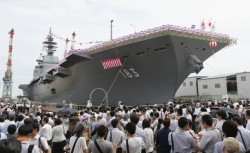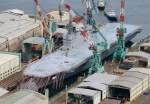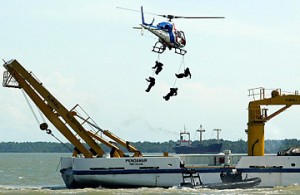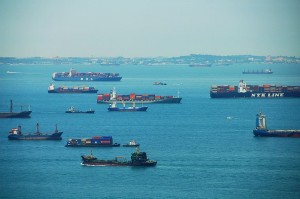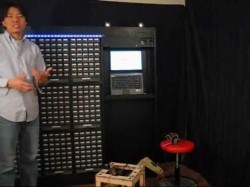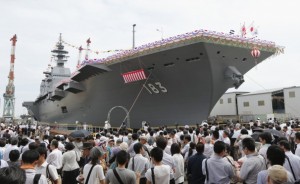
Meet the Japan Maritime Self Defense Force’s (JMSDF) newest and largest member, the Izumo (DDH-183). With its 248-meter flight deck and 27,000-ton displacement, the new helicopter destroyer – capable of carrying up to 14 helicopters – dwarfs its 197-meter Hyuga-class cousins (the Hyuga, commissioned in 2009 and its sister ship Ise, which entered service in 2011).
As with Japan’s two other helicopter destroyers, the Izumo does not have fighter-launching catapults and is unable to support fixed-wing aircraft. Even so, eventual conversion of any of Japan’s three helicopter destroyers is not out of the question. Given the constraints of their design (such as small elevators and hangars), the conversion of the two older ships would be more difficult, while the Izumo’s larger dimensions could eventually accommodate aircraft such as the F-35B, the short takeoff and vertical landing (STOVL) version of the new fifth-generation fighter.
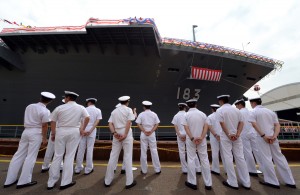
The launch is sure to cause concern in China, which remains embroiled in a territorial dispute with Japan over the Diaoyu/Senkaku Islands. The islands are administered by Japan, but claimed by both sides. Although Tokyo has been careful to include tasks such as the transport of personnel and supplies in response to natural disasters high on the list of the new ship’s priorities, the destroyer presents a potent addition to the operational capabilities and strategic reach of the JMSDF. Crucially, it helps Tokyo keep pace with – or indeed, stay ahead of – China’s own rapidly growing navy. All recent and forthcoming changes to Japan’s defense policy aside, keeping pace with Beijing has proven a challenge as the country continues to feel the squeeze of its frail economy and the limits of its 1%-of-GDP defense spending cap. Even so, the Izumo may provide renewed impetus for those who believe that East Asia is already knee-deep in an arms race, as well as those who believe that Japan is emerging from its long pacifist slumber.
At the time of writing, an official reaction from Beijing has yet to be made, but it will be interesting to read in light of the still-fresh images of China’s second aircraft carrier under construction. Whatever the official line may be, the symbolism of choosing 6 August – the anniversary of the atomic bombing of Hiroshima in 1945 – to unveil Japan’s largest post-WWII ‘aircraft carrier’ is sure not to go unnoticed in Beijing.
Below is a comparison of the ship with the Ise in a photograph taken by the author in Kure in March this year.
Despite their different angles, both photographs hopefully provide a decent overview of the two ships and offer sharp eyes enough material for comparison. Even from this distance, the difference in size is apparent. Any insightful observations from our readers are welcome in the comments below.
Miha Hribernik is Research Coordinator at the European Institute for Asian Studies (EIAS) in Brussels and an analyst at the geopolitical consultancy Wikistrat. The views expressed here are entirely his own.

